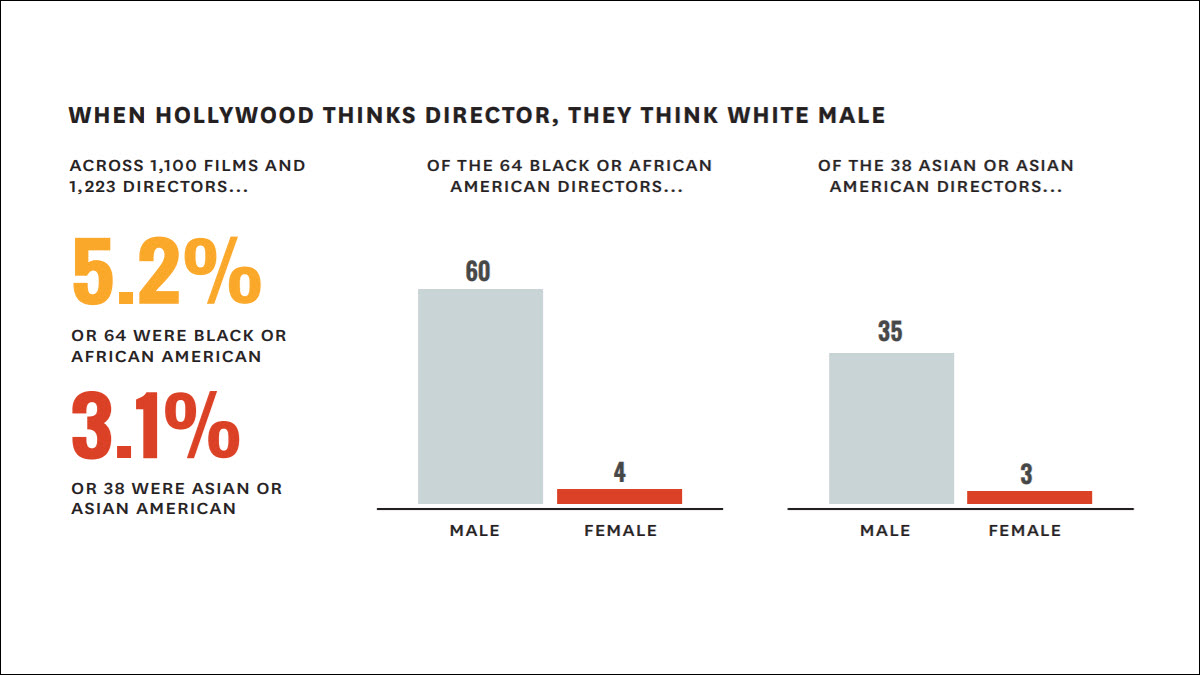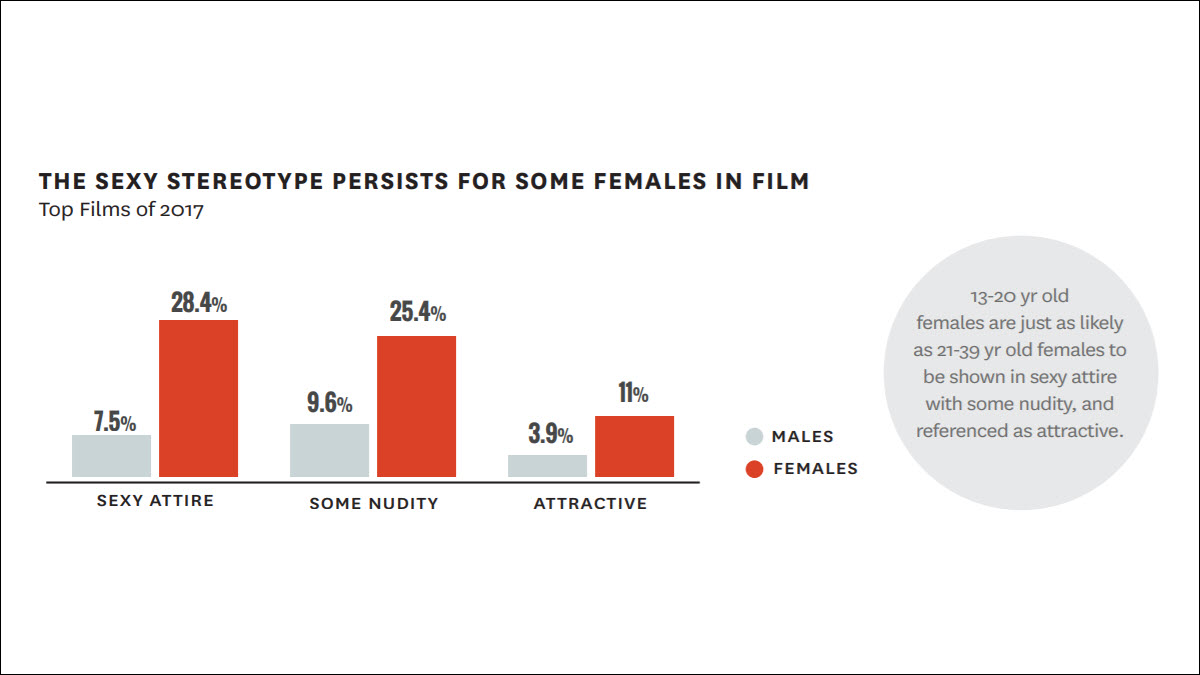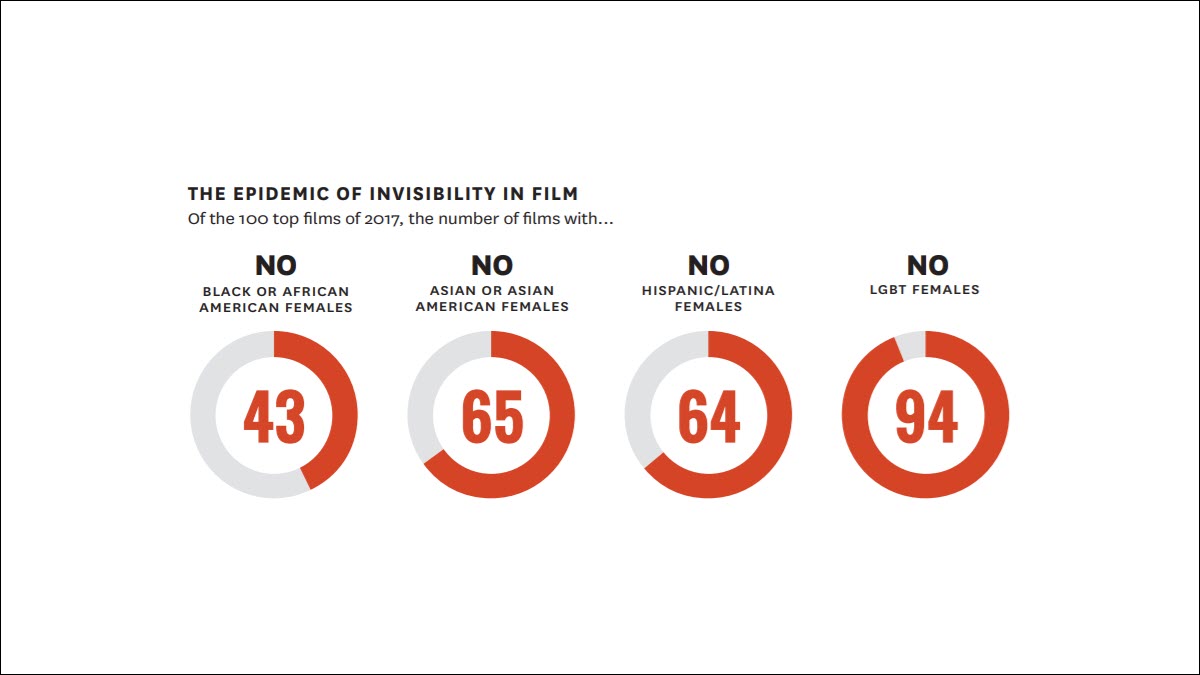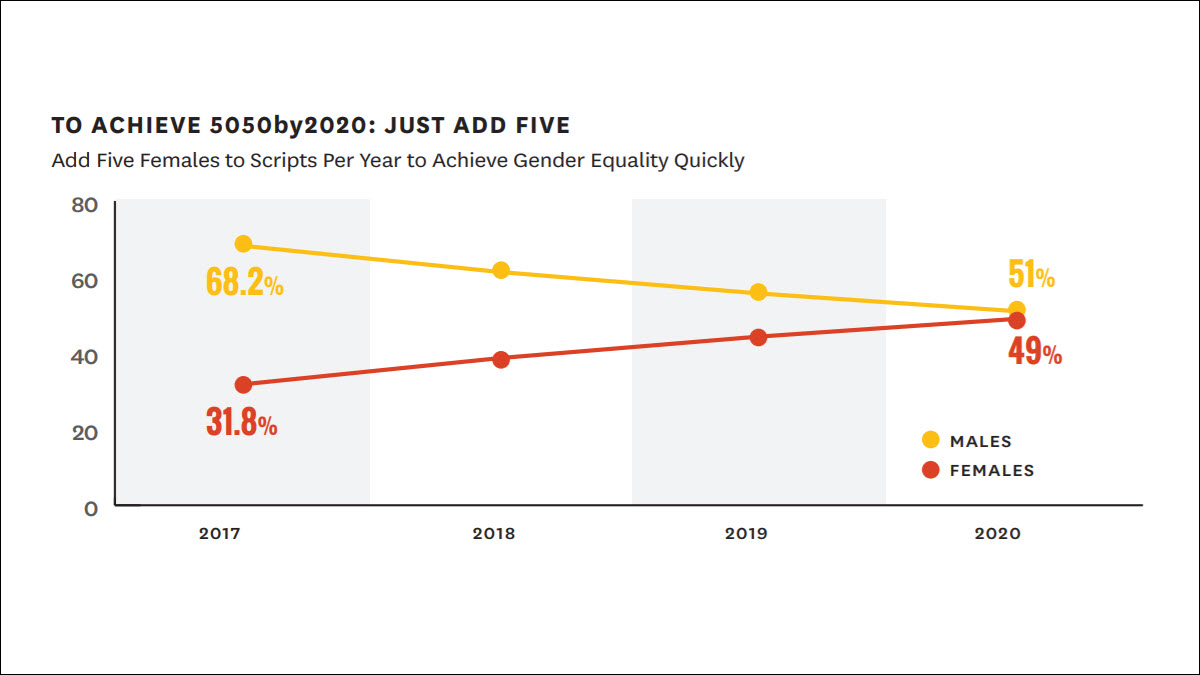Hollywood Makes No Progress Toward Diversity, Report Finds
Although women comprise more than half the U.S. population, they still comprise less than one-third of speaking characters in films and fill fewer than 20% of the above-the-line production roles.
The statistics are equally grim to worse for people of color, who in 2017 were cast in just 29.3% of speaking roles, with even lower representation behind the camera.
"The rhetoric in Hollywood may be changing when it comes to inclusion, but the numbers are not," USC’s Annenberg School for Communication and Journalism said in a statement about the Annenberg Inclusion Initiative's annual report, released July 31.
The 2018 report, "Inequality in 1,100 Popular Films: Examining Portrayals of Gender, Race/Ethnicity, LGBT & Disability from 2007 to 2017," analyzed diversity and inclusion trends in the top 100 films of each year from 2007 to 2017.
Of the 48,757 characters in the 1,100 films included, only 30.6% were female speaking roles. Behind the camera, of the 1,223 directors who helmed those films, 43 were women, only seven of whom were women of color. Among all the directors, just 5.2% were Black or African-American, and 3.1% Asian or Asian-American.

2017's Top 100
Among the top 100 films of 2017, the report found that of a total of 4,454 speaking characters, 31.8% were female. Of characters with an ascertainable race/ethnicity, 70.7% were White; 12.1%, Black; 6.2%, Hispanic/Latino; 4.8%, Asian; 3.9%, Mixed Race or Other; and 1.7%, Middle Eastern. American Indian/Alaskan Natives and Native Hawaiians each comprised fewer than 1% of speaking roles.
Multichannel Newsletter
The smarter way to stay on top of the multichannel video marketplace. Sign up below.
LGBT characters and characters with disabilities also remained underrepresented in 2017, the report said. Of the top 100 films, a whopping 81 had no LGBT characters, while 41 lacked any characters with disabilities.
“Those expecting a banner year for inclusion will be disappointed,” said Professor Stacy L. Smith, founding director of the Annenberg Inclusion Initiative and lead author of the report. “Hollywood has yet to move from talking about inclusion to meaningfully increasing on-screen representation for women, people of color, the LGBT community, or individuals with disabilities.”
On the production side in 2017, women held only 18.2% of the 1,584 above-the-line jobs: eight directors (7.3% of the total), 34 writers (10.1%) and 247 producers (21.7%), according to the report.
Drill-Down | Women Onscreen
Younger female characters (13-20 years old) are as likely to be sexualized in films as adult female characters, and all female characters are significantly more likely than male characters to be depicted in sexy clothing or lacking clothing.

While women's numbers onscreen are disproportionately lower than their numbers in society, the onscreen numbers diminish further among women of color and LGBT women.

The report suggested filmmakers could even the playing field for women onscreen by adding just five female characters to scripts each year through 2020.

Read USC Annenberg's Overview |Happy to Fire, Reluctant to Hire: Hollywood Inclusion Remains Unchanged
Read the Full Report | Inequality in 1,100 Popular Films
Read More |MCN's Coverage of Diversity and Inclusion
